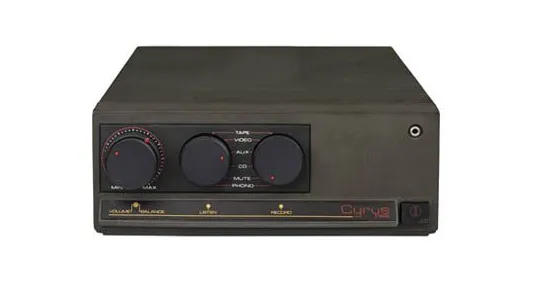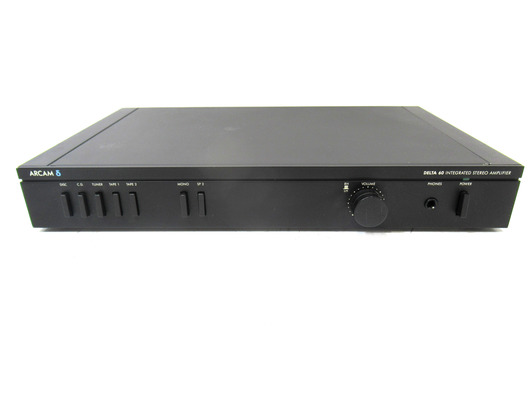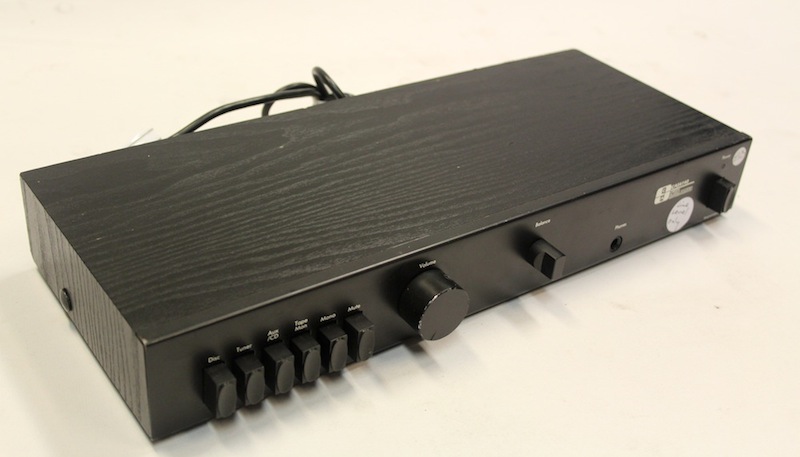Sin Gun you are bringing back memories of those days , yes I remember all the versions of Class A advertised with exotic sounding titles to capture the minds of the non engineering public .
Your right Britain at that time came out with simple compact "straight through " -- no bull designs in plain non flashy boxes and showed that they sounded better to the human ear than diminishing amounts of THD .
The Japanese battled each other to produce lower and lower distortion figures calling them some very enticing names with every type of audio control under the sun along with whole regiments of wafer switches.
ME ?-- I am minimalist in the control sense -DC connected etc.
Your right Britain at that time came out with simple compact "straight through " -- no bull designs in plain non flashy boxes and showed that they sounded better to the human ear than diminishing amounts of THD .
The Japanese battled each other to produce lower and lower distortion figures calling them some very enticing names with every type of audio control under the sun along with whole regiments of wafer switches.
ME ?-- I am minimalist in the control sense -DC connected etc.
I have never really understood all the hype around different sounding op amps.
If I put in a music signal then if its not coming out amplifier amplified exactly the same its not a good op amp.
Given the circuit has negative feedback there is little reason why it wont come out the same.
I understand why the old 741 is crap due to poor bandwidth, but most modern stuff is pretty good.
Claims of op amps sounding amazingly different are either lies or just pure imagination in my opinion.
To claim that (good) opamps do not sound different is real imagination! I really cannot imagine how someone with a decent stereo would not hear the differences. Even without listening by looking at the specs only it is by all means difficult to imagine that 2 different opamps will sound the same. The better spec'd opamp do not sound always better, i.e: IMO OPA604 has a better balanced sound than AD797 but on paper the AD797 is clearly the better opamp.
Last edited:
"If I put in a music signal then if its not coming out amplifier amplified exactly the same its not a good op amp."
I don't think such an opamp exists that is 100% the same; which I believe S.I.M. would prove.
Yeah!
Sin Gun you are bringing back memories of those days , yes I remember all the versions of Class A advertised with exotic sounding titles to capture the minds of the non engineering public .
Your right Britain at that time came out with simple compact "straight through " -- no bull designs in plain non flashy boxes and showed that they sounded better to the human ear than diminishing amounts of THD .
The Japanese battled each other to produce lower and lower distortion figures calling them some very enticing names with every type of audio control under the sun along with whole regiments of wafer switches.
ME ?-- I am minimalist in the control sense -DC connected etc.
Ahhh Duncan, I'm always thinking about the good old times (end 70's & 80's), I'm such a sentimental.......
You are bringing back memories too: Regiments of wafer switches!!! LOL !!!
Other British masterpieces (in terms of SQ, effectiveness, price quality relation, handling, power consumption etc.):
An externally hosted image should be here but it was not working when we last tested it.





An externally hosted image should be here but it was not working when we last tested it.
I had changed the opamps in my Creek to better ones, everybody could hear the difference.
Last edited:
The Musical Fidelity A1 was the most expensive of the lot but it was Class-A, you could fry your bacon on the heatsink (the entire upper case). And it was a real giant killer! It shot down Krell, Burmester and leagues of Japanese integrated & PrePower combos.
And all this with much higher THD specs!
I still have one A1 and a Creek.
And all this with much higher THD specs!
I still have one A1 and a Creek.
Last edited:
Claims of op amps sounding amazingly different are either lies or just pure imagination in my opinion.
It's all easily proven with null tests on multi channel units that are identical other than the op amps used in specific channels. That said, it does pay imo to have reference quality headphones/monitors and amps in order to discern the differences outside of null tests.
As far as the quantitative differences, imo much of it is when you begin driving them, and also in the upper frequency ranges. This can be seen quantitatively in the charts for the op amps that publish those charts.
Typically from extremely low output levels, the distortion levels are not impressive at all, even in a great op amp. But it actually keeps improving up to the op amp's sweet spot, at which point pushing them further causes them to rapidly begin distorting. And this usually happens well before approaching driving them to the voltage rails.
The distortion vs frequency curves for specific power level and load also play a part, with higher frequencies becoming distorted while frequencies where we can discern notes on a scale remain relatively clean.
And of course all of these published charts are using test signals that are absurdly simplistic compared to actual complex music...All to say plenty of quantitatively identifiable means to have differences in sound - with imo IMD being probably the most critical for music reproduction (though usually sought after by guitar players - see also TS-808 op amp discussions).
And of course not all op-amps have the same curves for these parameters, so comparing op amps in a specific circuit designed for a specific operating point can result in audible differences.
But that said, imo the differences tend to be much smaller when running in circuits optimized for a specific part's sweet spot. Something I have also found true with vacuum tube circuits. But my experience is that for either op amps or tubes, there are some parts that just don't sound very good in a particular application no matter what you do with the operating point or what the spec sheet might indicate.
JMO, YMMV, yadda yadda....
The Musical Fidelity A1 was the most expensive of the lot but it was Class-A, you could fry your bacon on the heatsink (the entire upper case). And it was a real giant killer! It shot down Krell, Burmester and leagues of Japanese integrated & PrePower combos.
And all this with much higher THD specs!
I still have one A1 and a Creek.
Your making me jealous Sin Gun.
I still have them for sentimental reasons. But honestly in terms or SQ they are light-years behind a modded TPA3255.
Sometimes I put a vintage stereo system together just for fun.
Last time I was shocked how bad the Yamaha A-1000 monitors are! Yes THE speaker which killed so many mega bucks US monster speakers in the good old days.
Sometimes I put a vintage stereo system together just for fun.
Last time I was shocked how bad the Yamaha A-1000 monitors are! Yes THE speaker which killed so many mega bucks US monster speakers in the good old days.
Or sales pitch.Claims of op amps sounding amazingly different are either lies or just pure imagination in my opinion.
@:
TI, please do forgive them, they don't know what they are talking!
Thanks TEXAS INSTRUMENTS for providing us audiophiles & engineers all over world with such excellent measuring & sounding devices.
And musicians for our sound production!
Nice thing is that all you need is a free DAW software to set up a null test. Of course when attempting to null two different pieces of hardware you will need to record each signal thru the same channel to get an apples to apples comparison...but if they do not null, you have 100% proof they are in fact different. Then all you're left with is figuring out which is "better"...lol.
It reminds me in the 70,s Japanese amplifier makers produced very low distortion amplifier ,way down in the -90db range but they sounded terrible .
You would think they would learn.
Reminds me of 80's Japanese amps with 0,0000003% THD, lots of watts, buttons and pots. But a cigar box like British amps like Creek, Mission, Nytech, ION, Musical Fidelity, Sugden, Arcam or a tube amp all with much higher THD sounding so much better. And the Japanese amps had slogans on it like: Class-AA, New Class-AA, Super Class-A, Super Mega Drive, Extreme Class-AAA, blah blah blah.

Japanese amp terminator: Creek in the service of her Majesty...
Last edited:
Reminds me of 80's Japanese amps with 0,0000003% THD,
No amplifier have 0,0000003% THD. If you knew that amplifier, please prove with the specification or measurement.
THD if only specify at 1kHz do not tell how accurate the reproduction. It should be from 20 Hz to 20kHz and from low level to near clipping. THD is not only measurement to descript how accurate the reproduction.
Some people like high distortion amplifier for sound effect. They think it sound pleasing.
And some people do not understand about measurement but give their opinion about measurement. The other do not understand the relation between measurement and the way it sound, but pretend they do understand.
Bimo I think Sin Gun was just trying to make a point rather than provide an accurate THD specification.
We were just having a bit of friendly banter .
Quite right some people including rock guitarists and all the tube aficionado,s like some distortion ,in the tube people,s case 2H and even medical audiologists and those involved with brain functions /personality etc made points that conflicted with normal engineering theory and practice that lower audio distortion must "always " be better .
The point made ( quite rightly ) by many engineers was that --fabricated/manufactured well its "hard " to criticize a well made audio chip.
BUT!--- even D.Self wasn't impressed with many expensive audio chips and certainly JLH kept changing his earlier audio chip designs be "better sounding ones ".
As I said before this provided 20 years of very aggressive /heated arguments of the two camps which made ( to me ) very enjoyable reading every month during the "audio years " of EW.
Some of the stuff said would now be barred by modern day moderators .
Nothing has changed , we are still organic beings not running with processors of the solid state kind in our brains -we have feelings/likes/dislikes and being a lover of freedom I hope that doesn't change but in 2021 ( to me ) the future doesn't look too good.
We were just having a bit of friendly banter .
Quite right some people including rock guitarists and all the tube aficionado,s like some distortion ,in the tube people,s case 2H and even medical audiologists and those involved with brain functions /personality etc made points that conflicted with normal engineering theory and practice that lower audio distortion must "always " be better .
The point made ( quite rightly ) by many engineers was that --fabricated/manufactured well its "hard " to criticize a well made audio chip.
BUT!--- even D.Self wasn't impressed with many expensive audio chips and certainly JLH kept changing his earlier audio chip designs be "better sounding ones ".
As I said before this provided 20 years of very aggressive /heated arguments of the two camps which made ( to me ) very enjoyable reading every month during the "audio years " of EW.
Some of the stuff said would now be barred by modern day moderators .
Nothing has changed , we are still organic beings not running with processors of the solid state kind in our brains -we have feelings/likes/dislikes and being a lover of freedom I hope that doesn't change but in 2021 ( to me ) the future doesn't look too good.
D. Self wasn't impressed with expensive audio op amps because they were expensive, not because they were bad, according to his books. He thinks the AD797 sounds great, but not better than his go-to, the 5532. I have not seen his comments on the OPA16xx amps that have come out in the last few years.
This is why they sell popcorn.
As I said before this provided 20 years of very aggressive /heated arguments of the two camps which made ( to me ) very enjoyable reading every month during the "audio years " of EW.
This is why they sell popcorn.
D. Self wasn't impressed with expensive audio op amps because they were expensive, not because they were bad, according to his books. He thinks the AD797 sounds great, but not better than his go-to, the 5532. I have not seen his comments on the OPA16xx amps that have come out in the last few years.
I like D. Self for detail measurement and technique. But design principle, I like Bob Cordell more and Dr. Arto Kolinummi.
In general, I will choose highest slew rate as possible, and then good harmonic profile, and THD the last. Sometime, I can sacrifice THD for signal to noise ratio when dealing with very low level signal.
- Home
- Amplifiers
- Solid State
- Choosing of best sounding OP AMPs for the lowest possible THD+N -really the best Way?
